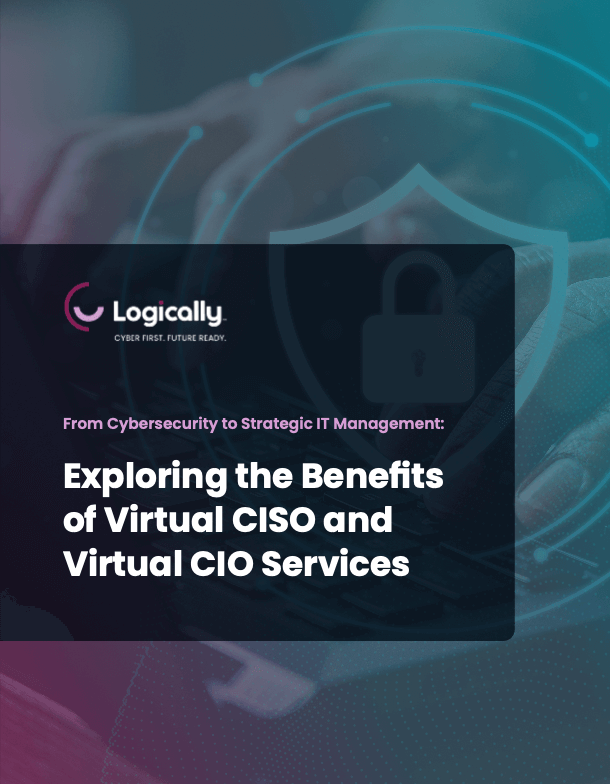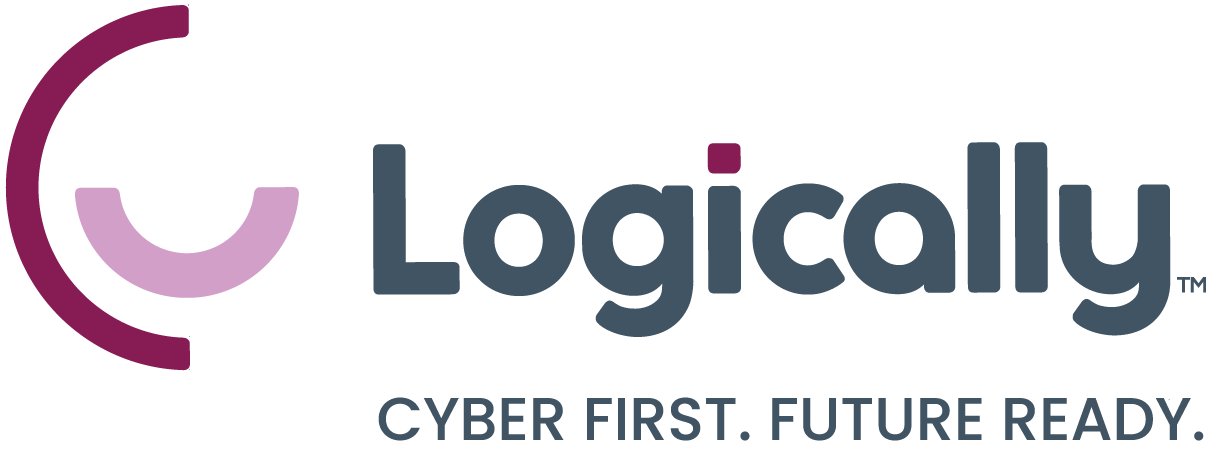Securing Your Digital Future: Leveraging Virtual CISO and Virtual CIO Expertise for Enhanced Cybersecurity and Technology Strategy
Introduction
The events of 2020 launched a firestorm of digital transformation as businesses of every size scrambled to establish virtual work environments for their employees and a robust online presence for their customers.
Although the frenzied pace of pandemic-era technology adoption may have slowed, the need for executive leadership to manage and implement your organization’s cybersecurity and technology strategy remains a business imperative.
However, budgetary constraints and lack of access to skilled technology professionals make it difficult for many small to midsize businesses (SMBs) to hire a full-time chief information officer (CIO) or chief information security officer (CISO). As a result, we are seeing a growing demand for virtual versions of these roles.
Virtual CIOs and CISOs (vCIOs and vCISOs) fulfill many of the same responsibilities as their in-house counterparts. However, there are several benefits to outsourcing these services to a trusted partner.
Let’s look at what vCISO and vCIO services can do for your organization and how to get the most business and security value out of the relationship.
Download this guide as a PDF
Fill out this form to download your copy of, Leveraging Virtual CISO and Virtual CIO Expertise for Enhanced Cybersecurity and Technology Strategy, or keep scrolling to learn more.

The Roles and Responsibilities of the vCISO and vCIO
Advantages, Benefits, and ROI of vCISO and vCIO Services
Key Considerations for Outsourcing vCISO and vCIO Services
Overcoming Common Challenges in vCISO and vCIO Business Relationships
Future Trends in vCISO and vCIO Services
.jpg?width=1732&height=1732&name=iStock-940143992%20(1).jpg)
The Roles and Responsibilities of the vCISO and vCIO
vCISO and vCIO are critical roles within an organization. Although both positions focus on the performance and security of technology and information systems, there are key differences between them.
vCISO Key Responsibilities
A vCISO is essentially in charge of administering a business’s information security strategy and management activities, including:
- Implementing and enforcing policies that affect information security.
- Maintaining cybersecurity and risk management best practices.
- Managing third-party access to data.
- Overseeing and coordinating regulatory and customer-required audits.
Outsourcing vCISO services can enhance your organization’s cybersecurity strategies in several key ways. One of the most impactful is assessing your current risk landscape. A risk assessment provides knowledge that helps the vCISO implement appropriate security measures to prevent potential threats from compromising sensitive data, systems, and applications.
Additionally, a vCISO can help your IT department get the most out of its cybersecurity budget and resources by ensuring that funds are allocated to the most critical and impactful areas of the security strategy first.
vCIO Key Responsibilities
The vCIO role is broader and more strategy-focused than the vCISO role. For example, a vCIO’s primary responsibilities may include:
- Ensuring that the organization’s IT infrastructure aligns with its business objectives.
- Monitoring the tech stack and replacing outdated and duplicate software with new solutions that maximize growth and profit potential.
- Providing a knowledgeable point of contact for solution and app vendors.
- Analyzing and identifying technology skills and knowledge gaps in the organization.
- Championing innovation in the IT department.
In short, vCIO services enhance business-centric cybersecurity strategies by helping companies put the right technology in place to identify and address security gaps, detect threats, and increase the business’s security posture.
According to Buddy Pitt, vCSO at Logically, vCISO and vCIO roles primarily differ in where their focus lies.
“Both the vCIO and the vCISO protect the confidentiality, integrity, and availability of data,” Buddy said. “But the CIO may be focused on disaster recovery processes, replication, and availability of that information, whereas the CISO might be focused on external threats, internal threats, and mitigating strategies.”

Advantages, Benefits, and ROI of vCISO and vCIO Services
When budgets are tight, it’s natural to look for ways to cut costs and manage spending. Although outsourcing vCISO and vCIO services may add a line item or two, in most cases, the benefits will save your company far more money than the services cost.
Here are a few examples of the ROI you get from vCISO and vCIO services.
Flexibility and Scalability
One of the primary benefits is that vCISO and vCIO services are delivered on demand, allowing businesses to scale up or down as circumstances change.
These virtual resources can be employed short-term or as needed for specific projects, so your organization gets all the skills and expertise without the cost of hiring a full-time executive.
Efficiency and Productivity
vCISOs and vCIOs can improve the efficiency and productivity of your in-house security teams.
An experienced vCISO or vCIO can work with your internal team to identify strengths and weaknesses and provide training and mentoring to bridge the gaps.
Cost-Effectiveness
Industry-leading technical talent is hard to find (and even harder to afford). Even if you have a lead on a qualified candidate, hiring a full-time CISO or CIO can be cost-prohibitive for many SMBs.
Outsourcing vCISO and vCIO services lets organizations pay for what they need, making cutting-edge cybersecurity services affordable for every business.
Access to Specialized Expertise
vCISOs bring specialized technical knowledge and cybersecurity experience to the table, enabling them to quickly get up to speed and understand your company’s specific security challenges.
This deep insight makes it easier for the vCISO to customize effective threat management strategies tailored to your technology systems and architecture.
Regulatory Compliance
As cyberattacks become more successful and damaging, businesses are paying more to recover and compensate their customers who were victims of the attack. As a result, government agencies are tightening regulatory environments and enforcing stiff penalties for compliance breaches.
vCISOs know how to apply those regulations and operationalize them into your business’s practices.
“Compliance is a driving force for hiring a CISO,” Buddy explained. “Business owners don’t necessarily want another expense, but being able to meet specific industry’s compliance requirements allows them to attain their next contract with the defense contractor or be able to continue their medical practice or write insurance for customers in New York.”

Key Considerations for Outsourcing vCISO and vCIO Services
Hiring a CISO or CIO requires enormous trust, collaboration, and accountability, especially when that role is being filled outside your company.
Here are some critical factors to consider when vetting potential vCISO and vCIO providers.
Security and Confidentiality
You are essentially handing the vCISO or vCIO the keys to your most sensitive data.
Look for a services provider that values partnerships and relationships and has a verifiable track record of integrity, trustworthiness, and results (i.e., check those references).
“Building trust is a relationship thing,” Buddy said. “It takes time, and I think you have to come through for the customer on a regular basis. When there's an incident, you're on the front lines with them side by side. Sometimes, it's less about the technical pieces and more about the ‘Can they depend on you?’”
Communication and Collaboration Tools
An effective partnership with a vCISO or vCIO depends on both parties having access to effective, efficient collaboration and communication tools.
Proficiency with solutions like Microsoft Teams and Outlook helps keep the lines of communication open through meetings, emails, documented minutes, and direct messaging.
Performance and Accountability Metrics
Data is essential to monitor the performance and effectiveness of your vCISO and vCIO services.
Tracking these key performance indicators can help determine whether your service provider is delivering results as expected:
- IT reliability (i.e., downtime)
- Compliance
- Security incidents (successful and unsuccessful)
- IT budgets
- Project status
Understanding of Your Industry’s Compliance Requirements
If your business is in a highly regulated industry—such as finance, healthcare, or insurance—you need information security leadership with a deep understanding of your regulatory environment.
A vCISO that specializes in your regulatory environment will help craft a defensive strategy that prevents incidents from occurring and triggers an appropriate response.
“Every business is different,” Buddy said. “If you're an SMB in the medical field dealing with protected health information, that’s very different from an SMB that does lawn care. Your vCISO needs to understand what the organization does, the value of the data, and liability of that data leaking.”

Overcoming Common Challenges in vCISO and vCIO Business Relationships
Every business relationship comes with its share of challenges, and outsourcing vCISO and vCIO services is no exception. Fortunately, with the right partner, many of these challenges are fairly easy to navigate.
Building Trust and Relationships
Your business’s security is too important to put in the hands of just anyone. If your vCISO or vCIO spends more time selling services than building a strong relationship, you're working with the wrong provider.
“The vCIO role is about building an overarching relationship so that we're the partner for their strategic planning,” said Kerry Nix, Vice President of Service Delivery at Logically. “We aren’t another arm of the sales group encouraging the client to buy new hardware. We want to talk about what they're doing this year, what they're doing next year, and what they're doing the next five years and build a relationship with them through that process.”
Ensuring Alignment with Organizational Goals
For vCISOs and vCIOs, building a bridge between IT and the business is a core competency. By aligning technology and security with organizational goals, your service provider can create a comprehensive and holistic strategy that includes cybersecurity objectives and business requirements, reducing risk, deterring cyber threats, protecting sensitive data, and keeping your business compliant.
“Your vCISO can’t make the same security to a partner with 10 employees at one location that they can to 10,000 with global sites.” Kerry said. “We have to know the business. We have to know what their requirements are; we have to know what their strategic objectives are. It's all dependent on building that relationship.”

Future Trends in vCISO and vCIO Services
Newsworthy breaches and ransom attacks, the ever-growing number of compliance requirements, and the overall complexity of today’s IT systems drive the need for a more thoughtful, forward-thinking approach to information security.
As a result, the roles of vCISO and vCIO are evolving quickly to keep pace with market needs and new technologies.
Technological advancements and innovations—particularly the convergence of AI and human intelligence—will play a large role in how vCISOs and vCIO respond to emerging security threats, some of which will be a result of malicious actors also utilizing AI.
“We used to be able to identify phishing emails because the language didn't make any sense,” Buddy said. “Well, those days are over. AI writes phishing emails like it has a master's degree in English, so our defenses have to become better as well.”
For example, AI tools can quickly process thousands if not millions of logs and separate potential threats from the noise. However, because AI cannot replace human reasoning and decision-making, experienced security professionals will still be needed for the foreseeable future to analyze security alerts, neutralize threats, and remediate vulnerabilities.
Download this guide as a PDF
Fill out this form to download your copy of, Leveraging Virtual CISO and Virtual CIO Expertise for Enhanced Cybersecurity and Technology Strategy, or keep scrolling to learn more.











